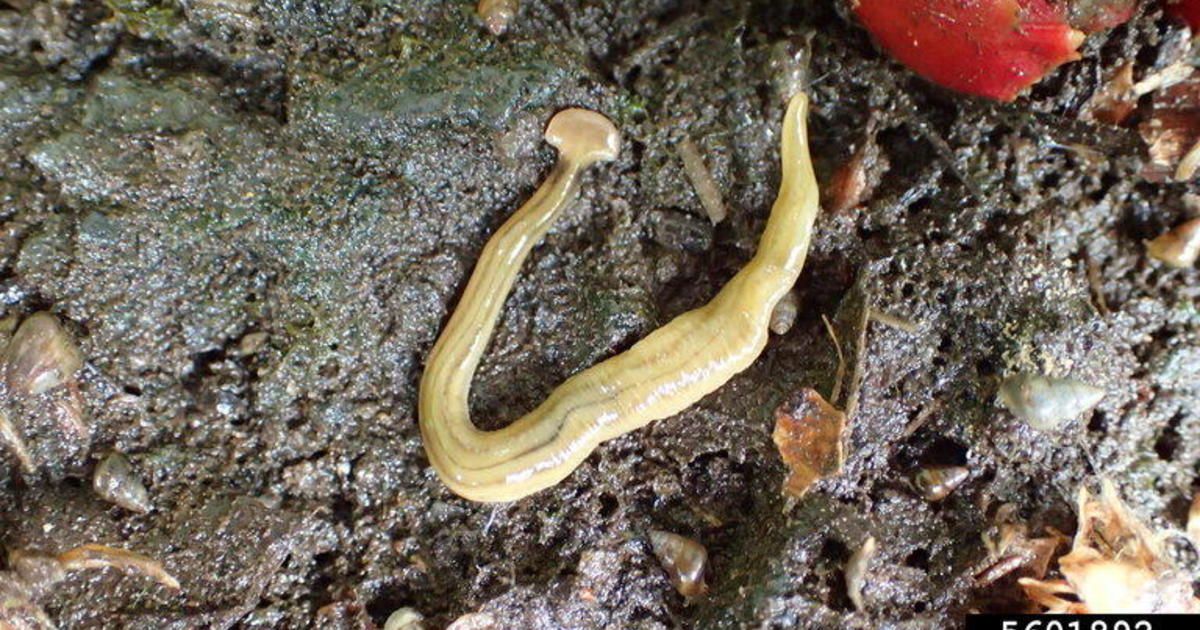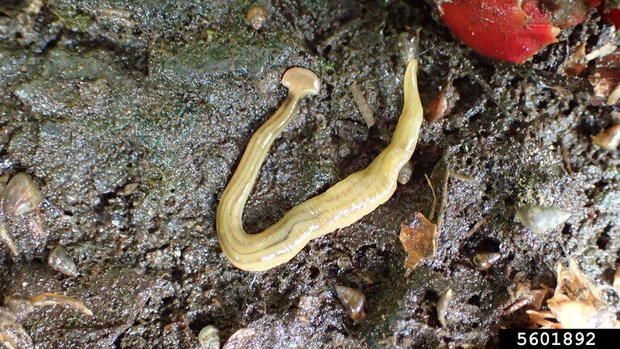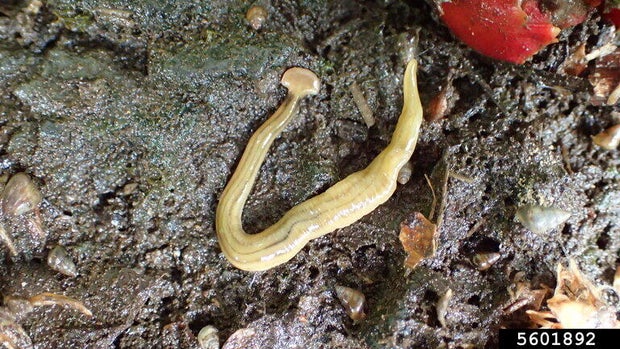Experts warn invasive hammerhead worms secrete “nasty toxin” and can be a foot long. Here’s what to know.

It might be Shark Week, but sharks aren't the only hammerheads to watch out for this summer. An invasive worm that packs the poisonous power of a puffer fish and the slithering stamina of a snake has been spotted along the East Coast of the U.S.
Michael Raupp, a professor of entomology at the University of Maryland, wrote about recent sightings of the worm in his "Bug of the Week" blog, saying "sometimes something so weird and creepy pops up that we need to spend some time on it."
He describes hammerhead worms as "creepy, slithering, predatory flatworms" that "dine on unsuspecting earthworms" and other creatures.

And "creepy" doesn't begin to describe the worms' ability to survive. If you attempt to capture them, Raupp wrote it can result in the "spontaneous fracturing of their bodies."
"As members of the flatworm clan, it turns out that hammerhead worms can also regenerate missing body parts," Raupp said. "My friend reported the individual segments of his fractured hammerhead worms independently slithered off the driveway into the grass where we can assume that they regenerated missing parts and resumed their hunt for small invertebrates."
According to Texas A&M's AgriLife Extension Service, any portion of the worm that's split apart can regenerate a new worm in roughly 10 days.

And "creepy" doesn't begin to describe the worms' ability to survive. If you attempt to capture them, Raupp wrote it can result in the "spontaneous fracturing of their bodies."
"As members of the flatworm clan, it turns out that hammerhead worms can also regenerate missing body parts," Raupp said. "My friend reported the individual segments of his fractured hammerhead worms independently slithered off the driveway into the grass where we can assume that they regenerated missing parts and resumed their hunt for small invertebrates."
According to Texas A&M's AgriLife Extension Service, any portion of the worm that's split apart can regenerate a new worm in roughly 10 days.
The worms, also known as land planarians or shovel-headed garden worms, are easily detected by their unique body structure: They have long, thick bodies with a flat, wide head that resembles that of a hammerhead shark. According to Texas A&M, the worms are often "honey-colored with one to five dark stripes running the length of the body." They can grow to be up to 15 inches long.
Where do hammerhead worms come from?
Hammerhead worms are an invasive species known to be native to Southeast Asia and believed to have been introduced in the U.S. in 1891 through infested plants and soil, according to the National Invasive Species Information Center.
"These rascals from Asia are largely unseen in the lawn but clearly visible as they glide in slow motion across a driveway on a cool dewy morning," Raupp wrote.
In the U.S., they're mostly found in the Southeast and along the East Coast. A USDA-shared mapping system maintained by the University of Georgia shows the species has been detected in a number of states, including Florida, Georgia, Alabama, Mississippi, Tennessee, the Carolinas, Kentucky, Virginia, New Jersey, Missouri, Arkansas, Oklahoma, Texas, Arizona and California.
Texas leads the nation with the highest number of confirmed sightings at 351. North Carolina, Georgia and California also have high numbers of sightings, each at well over 200 since the year 2000. The most recent confirmed sighting was in May in Anderson, South Carolina, although many other sightings have been shared on the website iNaturalist.
Though unconfirmed by the UGA map, photos and observations reveal dozens of other sightings this year.
Why are hammerhead worms bad?
Hammerhead worms prey on earthworms, which are essential to land and agriculture health. Earthworms primarily eat organic material in soil and their moving habits and waste allow that soil to remain moist and rich, according to the USDA.
"Earthworm tunnels bring in oxygen, drain water and create space for plant roots," the agency says. "Their natural feeding habits mean that small amounts of soil pass through their bodies and, surprisingly, when they excrete it, it is in better condition—what goes in comes out much better!"
Are hammerhead worms dangerous?
It's important to note that hammerhead worms don't bite or sting, but they do pack toxins that could cause some issues for people and animals alike. According to Raupp, they can secrete a "potent, paralyzing tetrodotoxin, the same lethal toxin found in puffer fish."
That toxin is aimed at helping subdue larger prey for the hammerhead worm, but many people who have come into contact with the worms had reported skin irritations from the substance. Domestic animals could also be impacted, Raupp said, with reports of discomfort or illness.
How do you kill hammerhead worms?
Lamar County AgriLife Extension Agent Jessica Humphrey says that first and foremost, you should wear gloves when digging through the dirt to catch the worms.
"If you find them, dig them up whole and put them in a sealable plastic storage bag with salt to kill them," she said, "and then you can dispose of them in the bag after that."
Texas A&M also says that citrus oil and vinegar can also be used, but that they would have to be put directly on the worms.

